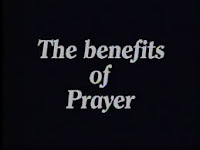Yoga is for everyone:-
Most yoga studios and local gyms offer yoga classes that are open to all generations and fitness levels. It’s exciting to enter a room full of young teens, athletes, middle-aged moms, older gentlemen and even fitness buffs and body builders. Everyone can feel accepted and included and, unlike other sports or classes that focus on niche clients, yoga tends to have open arms. Whether you like to say "Om" or you can’t stand the word “yogi;” whether you are 92, 53, or even 12, yoga can help you.Yoga encourages overall health and wellness:-
Yoga is not just about working out, it’s about a healthy lifestyle. The practice of yoga allows students to be still in a world consumed with chaos. Peace and tranquility achieved through focused training appeals to everyone.Yoga’s deep breathing and meditation practices help foster an inner shift from to-do lists, kids and spouse’s needs, financial concerns and relational struggles to something a little bit bigger than the issues you face. Yoga helps relieve stress and unclutter the mind, and helps you get more focused.
Yoga has many faces:-
One of the benefits of yoga is that you can choose a yoga style that is tailored to your lifestyle, such as hot yoga, power yoga, relaxation yoga, prenatal yoga, etc. Whether you prefer you're at home, in a private session, watching a DVD or at a studio or gym, there are a huge variety of options available to suit your goals and needs.
Strength
training and flexibility:-
Yoga’s focus on strength training
and flexibility is an incredible benefit to your body. The postures
are meant to strengthen your body from the inside-out, so you don’t just
look good, you feel good too. Each of the yoga poses is built to
reinforce the muscles around the spine, the very center of your body,
which is the core from which everything else operates. When the core is
working properly, posture is improved, thus alleviating back, shoulder and neck pain.How does power yoga build muscle?
A more advanced form of yoga can amplify these effects. Adapted from the basic Ashtanga yoga, power yoga requires increased amounts of energy, focus and strength. Although power yoga is an evolvement of the basics, it certainly is not a basic course.But how does it help build muscle? Deeper, more focused participation is required, because most poses are held for five full breaths versus the usual one to three breaths. Muscles are challenged as the mind and body have to work together simultaneously to hold a position or continue a succession without giving up. Breathing, posing, moving and increasing flexibility happen all together at one time, which solicits a new level of discipline in your mind and body.
Power yoga and the core:-
Isometric exercises are one of the best ways to build core strength. Isometric, stemming from the words “same” and “length,” simply translates to holding one position without moving. Power yoga uses isometric exercises along with other postures that are designed to make the core and back stronger. Flexibility and balance stem from your core, so it is very important to train this area of the body. In turn, you can increase the strangth and health of your entire body. Generally a higher-temperature room is used in this practice to help keep the muscles warm and release additional toxins from the body.Power yoga’s effect on the total body:-
Here's a list of some of the most beneficial aspects of power yoga:- It increases endurance, strength and flexibility.
- Mental endurance and physical stamina are tested through holding postures for extended breaths.
- Arm and shoulder strength is multiplied as you use your own body weight for resistance.
- Lats and other back muscles begin to support the spine better than before.
- Abdominals and obliques are refined and sharpened through building core muscles.
- Poor and average posture begins to correct itself over time.
- Hip flexors are stretched and rebuilt.
- Glutes, quads, hamstrings, and calves are tightened and lengthened where they need to be.




